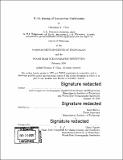| dc.contributor.advisor | David McGee. | en_US |
| dc.contributor.author | Chen, Christine Y.(Christine Yifeng) | en_US |
| dc.contributor.other | Joint Program in Oceanography/Applied Ocean Science and Engineering. | en_US |
| dc.contributor.other | Massachusetts Institute of Technology. Department of Earth, Atmospheric, and Planetary Sciences. | en_US |
| dc.contributor.other | Woods Hole Oceanographic Institution. | en_US |
| dc.date.accessioned | 2020-10-18T21:41:57Z | |
| dc.date.available | 2020-10-18T21:41:57Z | |
| dc.date.copyright | 2020 | en_US |
| dc.date.issued | 2020 | en_US |
| dc.identifier.uri | https://hdl.handle.net/1721.1/128075 | |
| dc.description | Thesis: Ph. D., Joint Program in Oceanography/Applied Ocean Science and Engineering (Massachusetts Institute of Technology, Department of Earth, Atmospheric, and Planetary Sciences; and the Woods Hole Oceanographic Institution), 2020 | en_US |
| dc.description | Cataloged from PDF of thesis. Vita. | en_US |
| dc.description | Includes bibliographical references (pages 181-211). | en_US |
| dc.description.abstract | Carbonates are prevalent in many modern and ancient lacustrine settings, but reconstructions of past lake levels or environments from such materials have been hindered by poor chronology. Uranium-thorium (U-Th) dating has the potential to fill a gap in current geochronological tools for such archives, but past attempts have been confounded by poor understanding of the complex makeup of lacustrine carbonates, leading to misguided conclusions on both the utility of certain geochronological tools as well as the age of these deposits. This thesis showcases strategies for the successful application of U-Th geochronology to two types of lacustrine carbonates: lake bottom sediments and tufa deposits. Chapter 2 presents a systematic approach to U-Th dating carbonate-rich lake sediments using the ICDP sediment core from Lake Junín, Peru. | en_US |
| dc.description.abstract | Chapters 3-5 seek to demonstrate the descriptive power of combining precise U-Th dates on tufas and other carbonates with geologic observations of their depositional context at all scales-from the outcrop to the microscale. Here, the tufas originate from a transect of closed-basin lakes in the central Andes of northern Chile. With improved sample selection and leveraging of the incontrovertible constraints of stratigraphy and coevality, we are able to test the validity of U-Th data. Combining quality-controlled geochronological constraints with careful characterization of different carbonate facies can yield new insight on the character of lake level changes. These case studies offer frameworks for interpreting scattered geochronologic data of any size or system. By embracing the noise in our data, we now have a richer understanding of the controls on uranium in these deposits. | en_US |
| dc.description.abstract | Of all the lessons learned, we hold the following as most important: for the determination of the age of lacustrine carbonates, geologic context--in the form of sedimentological observations, additional geochemical data, and paleoecological descriptions--is of equal importance to the numerical accuracy and precision of geochronological measurements. | en_US |
| dc.description.statementofresponsibility | by Christine Y. Chen. | en_US |
| dc.format.extent | 211 pages | en_US |
| dc.language.iso | eng | en_US |
| dc.publisher | Massachusetts Institute of Technology | en_US |
| dc.rights | MIT theses may be protected by copyright. Please reuse MIT thesis content according to the MIT Libraries Permissions Policy, which is available through the URL provided. | en_US |
| dc.rights.uri | http://dspace.mit.edu/handle/1721.1/7582 | en_US |
| dc.subject | Joint Program in Oceanography/Applied Ocean Science and Engineering. | en_US |
| dc.subject | Earth, Atmospheric, and Planetary Sciences. | en_US |
| dc.subject | Woods Hole Oceanographic Institution. | en_US |
| dc.title | U-Th dating of lacustrine carbonates | en_US |
| dc.type | Thesis | en_US |
| dc.description.degree | Ph. D. | en_US |
| dc.contributor.department | Joint Program in Oceanography/Applied Ocean Science and Engineering | en_US |
| dc.contributor.department | Massachusetts Institute of Technology. Department of Earth, Atmospheric, and Planetary Sciences | en_US |
| dc.contributor.department | Woods Hole Oceanographic Institution | en_US |
| dc.identifier.oclc | 1199138805 | en_US |
| dc.description.collection | Ph.D. Joint Program in Oceanography/Applied Ocean Science and Engineering (Massachusetts Institute of Technology, Department of Earth, Atmospheric, and Planetary Sciences; and the Woods Hole Oceanographic Institution) | en_US |
| dspace.imported | 2020-10-18T21:41:45Z | en_US |
| mit.thesis.degree | Doctoral | en_US |
| mit.thesis.department | EAPS | en_US |
